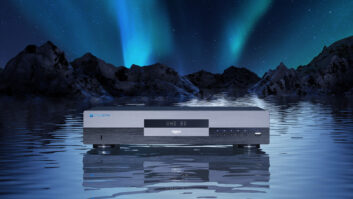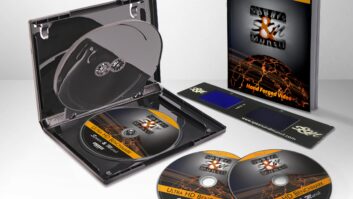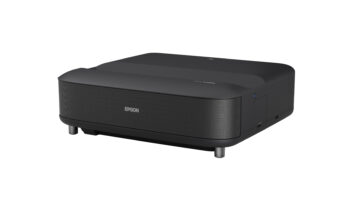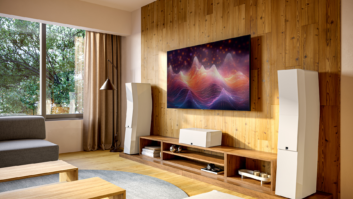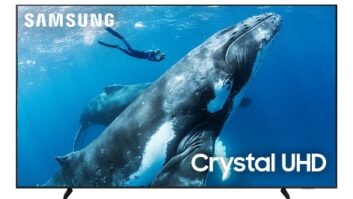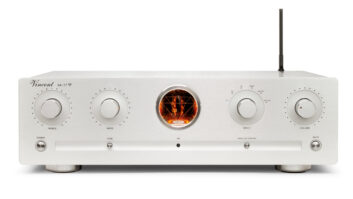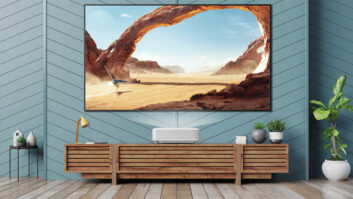I’m not going to lie…when I first thought of writing this post, my “working title” was something along the lines of, “Why Ultra HD Blu-ray Faces an Uphill Battle.” I figured I’d point out all the reasons why I think UHD-BD is destined to be a commercial failure of a product launch, how the vast majority of people now rely on streaming video services rather than discs for movie watching at home, and how most of the Blu-ray players that we currently sell are probably being used far more as Netflix, Amazon, and Hulu streaming devices, rather than for disc spinning. I mean, come on. A new, physical, disc-based movie format? In 2015? Are we in a parallel universe here?!
As I mind-mapped my story, I found myself repeatedly comparing the upcoming UHD-BD format to another performance-based platform: Laser Disc. Then, I took a step back and thought, “Yeah, UHD-BD will likely be a niche format exactly like Laser Disc…but that could actually be a great thing!”

Think about it, who were the majority of people that purchased LD players and movies? They were the enthusiast adopters who were true cinephiles. They were the people that wanted to take advantage of the format that offered the best picture and sound, and that allowed them to enjoy movies in their original theatrical aspect ratios. They loved delving deep into movies with rich special features, and box sets that often included full scripts and other movie memorabilia.
And Laser Disc players were not inexpensive, many selling for upwards of $1,000 and played movies that frequently sold in elaborate box sets for well north of $100 per film. And if you ever speak with a former Laser Disc owner, they will likely speak about their movie collections and players they owned over the years with great passion. (Watching Speed on Laser Disc literally got me into the CI business and launched my writing career.)
And these are exactly the kinds of customers that A) we love and cater to B) purchase higher-end media rooms and equipment C) will be excited about getting the maximum performance out of their new systems with a cutting-edge format and D) aren’t afraid to pay for the privilege of doing so.
With UHD Blu-ray we have a brand-new format that appeals almost exclusively to those high-end enthusiast customers that come to us for the best experience in the very first place!
For the foreseeable future, UHD-BD will be the solution when it comes to absolute audio and video performance. (Save a 4K download section from Kaleidescape’s online store, which would offer—one would speculate—true, digital, bit-for-bit copies of the UHD disc content.) Even today, there are no streaming—or transmitted – signals that can rival the picture and sound of what regular Blu-ray discs offer. (While 4K streaming from Netflix and Vudu’s HDX both deliver beautiful pictures, their lossy audio doesn’t compete with Dolby TrueHD or DTS HD-Master.)
This performance gap will only increase with UHD-BD when you consider that it will support data transfer speeds greater than 100 Mbps (predicted to be 128 Mbps max rate for a 100 GB disc) compared with a paltry 15.6 Mbps for Netflix’s Ultra HD streams. And let’s not forget that Netflix recommends a minimum sustained download speed of 25 Mbps to view its 4K content. How many of your customers reliably and consistently get that kind of speed? Or how much might ISPs start charging or data-capping you for binge-watching a bunch of 4K content…?

Panasonic prototype 4K Blu-ray player showed at CES 2015.
Unlike Laser Discs players and movies, however, the cost of Ultra HD Blu-ray players and movies shouldn’t be nearly as prohibitive. Much of the technology involves just tweaks on existing Blu-ray players, and it is speculated that we will see the first batch of players in the $300-500 range, with prices dropping in time. Sure, it’s not the $79 Blu-ray player you’re selling today (and making like $5 on), but it isn’t the crippling first-gen price we often see at a new product launch. And hopefully manufacturers will follow Oppo and offer a well-built, higher end solution that won’t look like a cheap pile of plastic in an equipment rack. Movies are also expected to be comparably priced similar to regular Blu-ray titles.
With support for high dynamic range, 10-bit video, wider color gamut, higher frame rates, and object-based sound formats (like Dolby Atmos and DTS: X), Ultra HD Blu-ray is going to be the platform for making your systems look and sound their absolute best. And how could that possibly be anything but good news?
John Sciacca is principal of Custom Theater and Audio in Myrtle Beach, SC.

